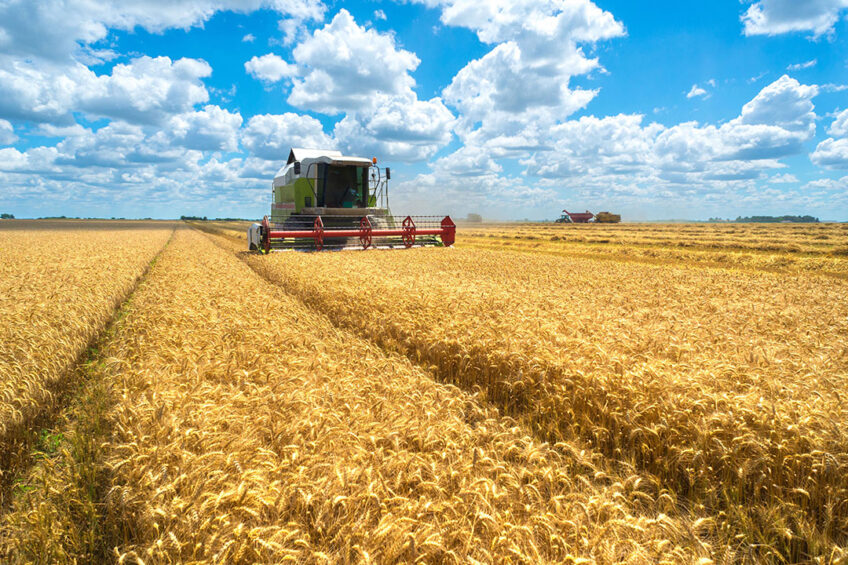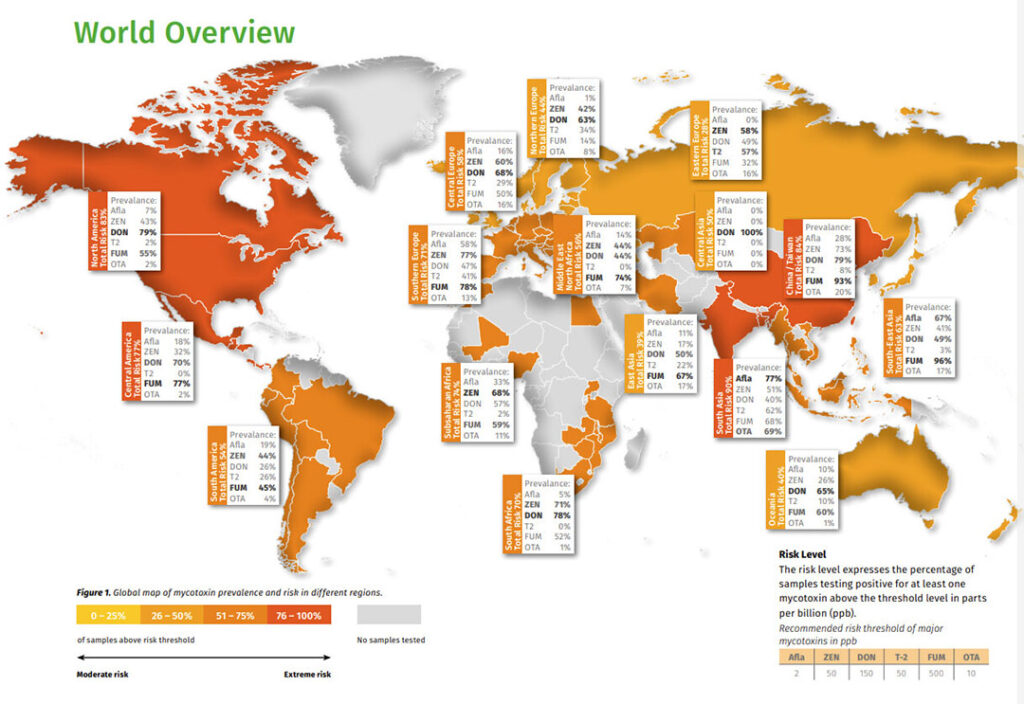DSM World Mycotoxin survey results show need for diligent monitoring

Monitoring and mitigation strategies are key to getting on top of mycotoxins, which continue to pose risks across the globe.
Results from dsm-firmenich’s latest half year survey (January – June) show that the Fusarium mycotoxins fumonisins, deoxynivalenol and zearalenone are most frequently found.
Nearly 10, 200 samples were taken from 78 countries with the highest regions of mycotoxins found in North America, South Asia and China and Taiwan. Mycotoxins are naturally produced by fungi that can contaminate feed raw materials in the field and in storage and detrimental to the health of animals. Adverse effects of mycotoxin contamination include impaired reproduction, digestive disorders, carcinogenicity and reduced performance.
Commenting on the results, Ursula Hofstetter, Head of Mycotoxin Risk Management at dsm-firmenich, said mycotoxins were an ever-present threat to animal health, performance and sustainability.
“The latest results reveal a continuously evolving set of challenges, highlighting the importance of diligent monitoring and state-of-the-art mitigation strategies to the feed and animal protein industry’s profitability.”
Detailed results from the samples show the following levels of prevalence

In terms of co-contamination, 64% of the samples found more than one mycotoxin, while 23% found one and 14% were clear.
The biggest mycotoxin risk to animal species – ruminants, pigs, poultry and fish – were from ZEN and DON in Europe; from FUM and DON in the Middle East and North Africa, and from FUM, DON and ZEN in Asia, and North America.
In 365 samples of mycotoxins and metabolites, the following emerging mycotoxins were found:
- Corn – Aurofusarin – 94%
- Finished feed – Tenuazonic acid – 91%
- Straw – Emodin – 93%, EnniatinB – 93%.











